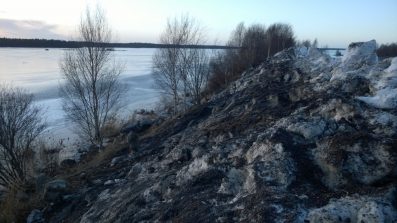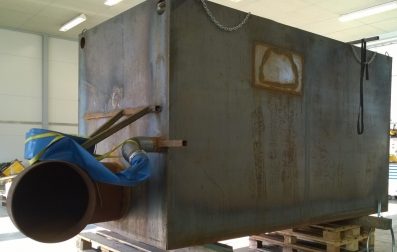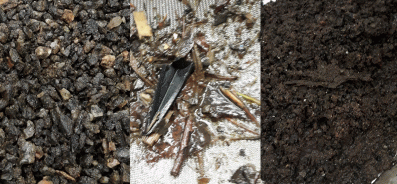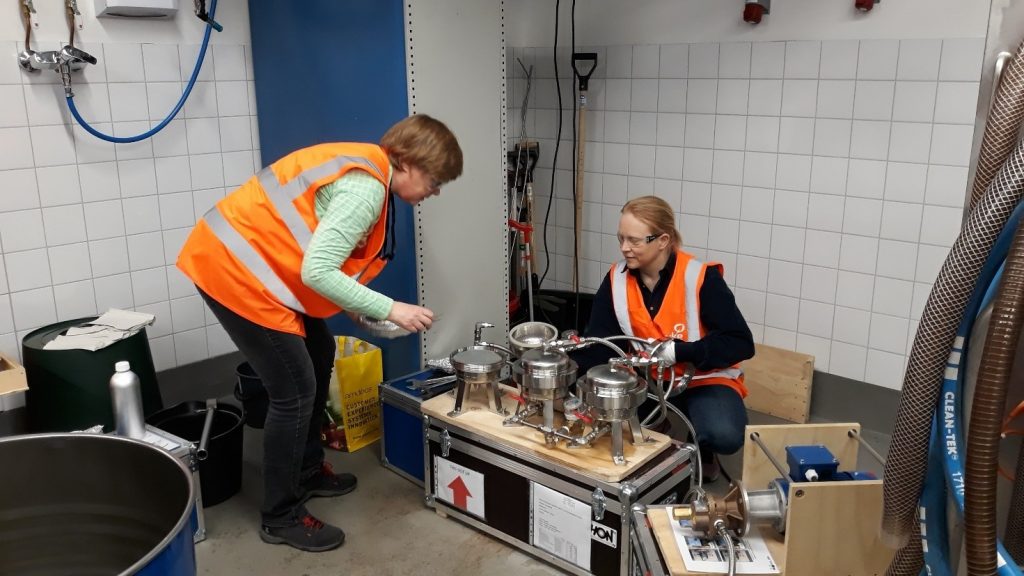Piloting removal of microplastics from meltwater of urban snow
Natural Resources Institute in Finland (Luke) performed a pilot experiment to gather information about the microplastics in urban snow and to help startup company Clewat Ltd to further develop their snow melting and purification prototype.

Snow dumping site in Kokkola on the shore by the Gulf of Bothnia (photo: Erika Winquist)
Problem with the urban snow
During typical winter conditions in all cities across Finland, as in other Nordic countries, huge amounts of urban snow, ploughed from the streets, is transported to snow dumping sites. In some cities the situation is even worse if snow is dumped directly into the Baltic sea, as in Helsinki where during winter 2018-2019 ca. 20 000 truckloads of snow was dumped untreated into the sea.
Clewat Ltd, an innovative start-up company

Clewat prototype of the snow purification unit, a steel filter system will be mounted in the end of the metal pipeline (photo: Erika Winquist)
A start-up company Clewat Ltd has addressed this problem by developing a snow purification pilot. Also, in their hometown Kokkola, the snow is collected to a snow dumping site on the shore by the Gulf of Bothnia, the most northern part of the Baltic Sea. Even the snow is not dumped directly into the sea, the meltwaters from the snow dumping site are running to the sea.
Clewat has started to design the pilot by testing how to melt the snow during the winter and make the process continuous and sustainable. In their solution, snow melting process uses the power of flowing water and seawater temperature, or alternatively waste heat from the district heating network.

Solid material recovered from urban snow (photo: Marjatta Vahvaselkä)
The actual purification step will be done by filtration. The snow and water passing through the process is filtered and the waste is collected.
Microplastics in urban snow
Urban snow contains various impurities, but the focus was in microplastics (MP) from road traffic, i.e. small particles released from car tires and road surface. However, there is very little information available of the particle size of the MPs from road traffic. To help Clewat to further develop their prototype, Natural Resources Institute Finland (Luke) conducted with them a pilot test where the aim was to find out the particle size range of the MPs in urban snow and according to that select an optimal mesh size for the steel filter system for the prototype.
Experimental set-up
Snow for the pilot experiment was collected from the snow dumping site in Kokkola in February 2020. Originally the snow had been ploughed from the city center of Kokkola 3 – 4 weeks before. Part of the snow was filtrated through the prototype with variable mesh sizes and part of the snow was left untreated. The analysis of the untreated meltwater provides data of the original MP concentration and the particle size range in urban snow. Respectively the analysis of the treated meltwater provides data of the effectivity of the filtration system. All samples were further filtrated through the UFO-system to recover the solid fine fraction in meltwater. Next the MP particles will be isolated from the solid fine fraction and the final MP analysis will be done by Aalborg University (AAU). The results are expected in the beginning of 2021.

Filtration of the meltwater with UFO-system (photo: Kalle Kaipanen)
Written by: Erika Winquist and Marjatta Vahvaselkä, Natural Resources Institute Finland (Luke)
Johannes Myllykoski and Stjepan Budimir, Clewat Ltd
